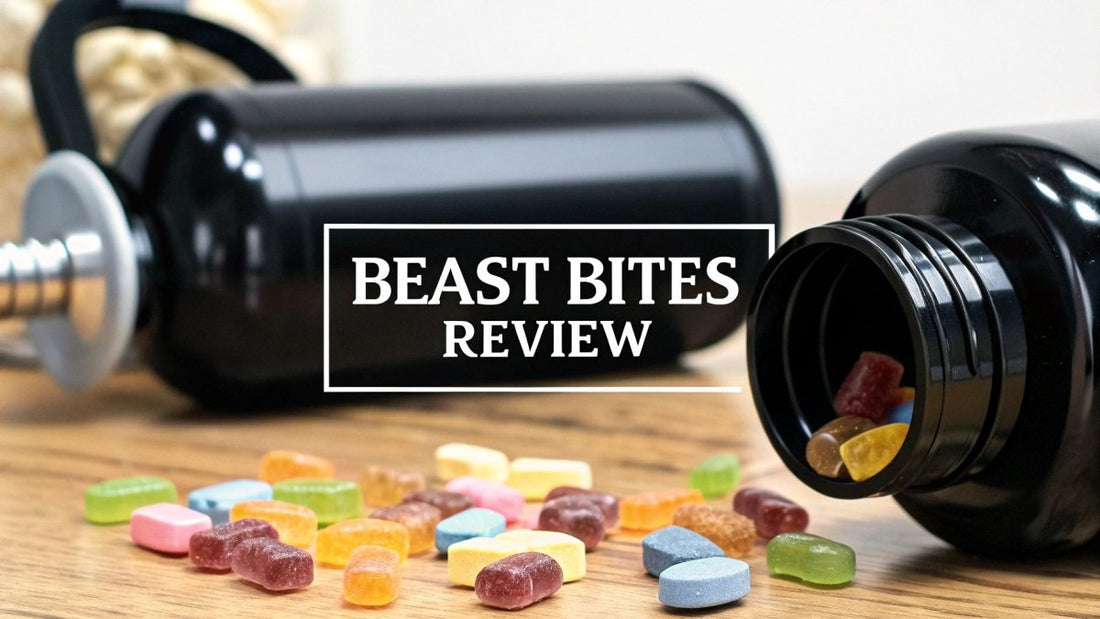
Beast Bites Creatine Gummies An Unbiased Review
Share
For anyone who's ever gotten tired of the chalky mess and clumpy shakes that come with traditional creatine powder, Beast Bites Creatine Gummies probably looked like a dream come true. The idea was simple and brilliant: pack all the proven muscle-building and performance benefits of creatine into a tasty, easy-to-eat gummy.
The Appeal of Grab-and-Go Creatine
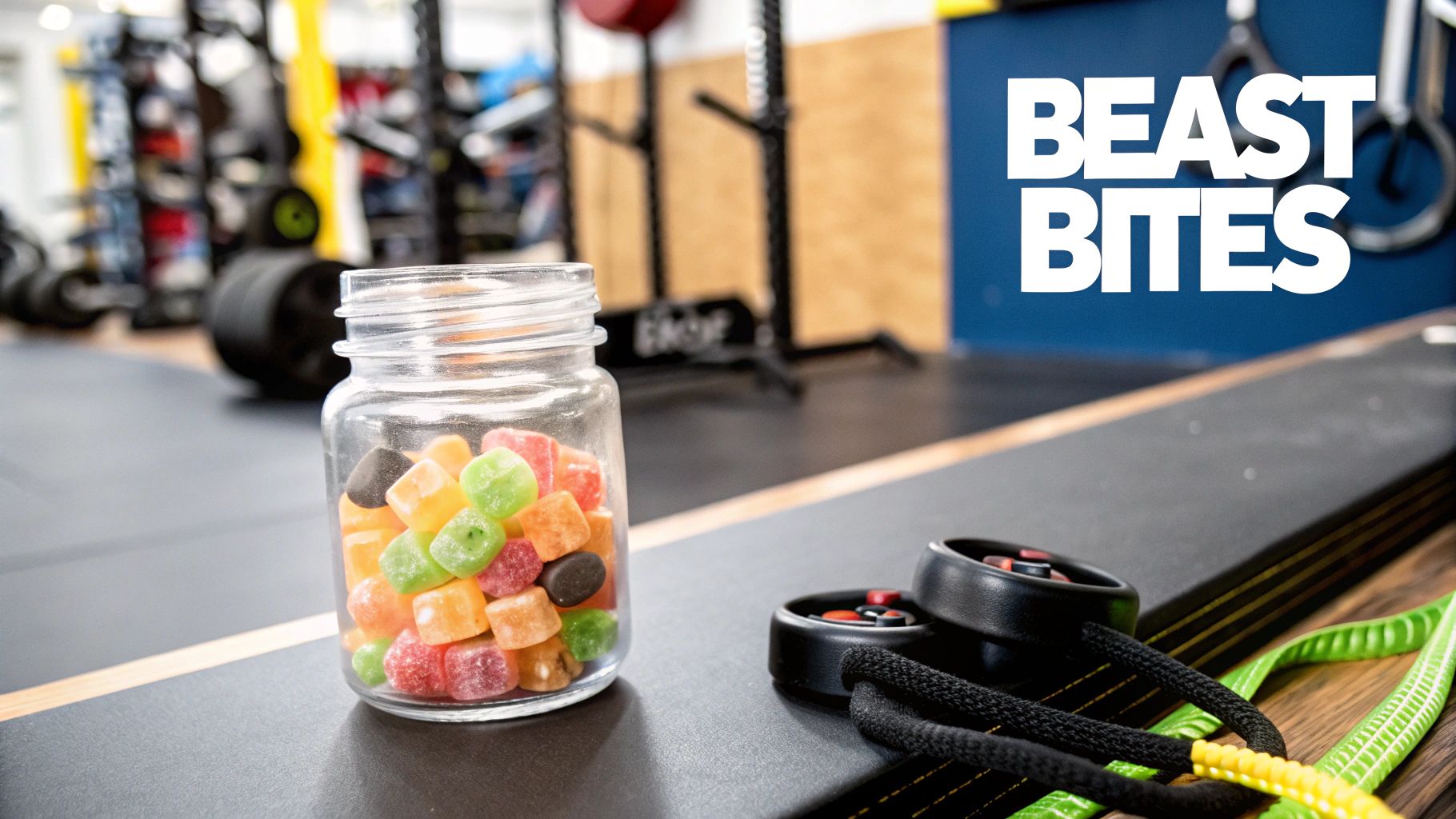
Let's be honest, the supplement world has been moving towards convenience for years, and creatine gummies are a perfect example. For decades, creatine monohydrate meant one thing: a gritty powder you had to carefully measure out and shake like crazy, hoping it would dissolve. It worked, but it always felt like a bit of a chore.
Gummies completely flipped that script. Suddenly, taking your daily creatine wasn't a task—it was a treat. The appeal is all about simplicity. Instead of scooping, mixing, and chugging, you just grab a few flavorful gummies and go. This convenience factor alone is a huge reason so many people were excited to try them.
A Market Ready to Explode
This hunger for easier supplements has ignited massive growth. The global market for creatine gummies was valued around $45.1 million and is expected to rocket to $168.2 million by 2032. That’s a staggering compound annual growth rate (CAGR) of 18.7%, largely fueled by people wanting effective, clean-label products that don't complicate their lives.
The initial buzz around products like Beast Bites proved that people want fitness to fit them, not the other way around. The promise was incredibly compelling:
- No Mess: Finally, no more fine white powder coating your countertops.
- Great Taste: A welcome switch from chalky, bland liquids to a fruity chew.
- Perfect Portions: No more guesswork—every serving is pre-measured.
- On-the-Go Simplicity: You can toss them in your gym bag, take them at your desk, or pack them for travel without a second thought.
The real magic here is removing any friction that gets in the way of consistency. When taking your supplement feels more like a reward than a requirement, you’re much more likely to keep up with it day after day.
But that convenience often comes with a catch, which raises some critical questions. As we dig into the story of Beast Bites creatine gummies, we have to look beyond the slick marketing. Is the ease of use worth the price? And more importantly, did the product actually hold up to its performance claims?
Before we get into the specifics of the brand and the controversy that followed, it's helpful to know what makes a good creatine gummy in the first place. You can read our complete creatine gummies guide to understand the fundamentals. Having that background is key to seeing the full picture.
Decoding the Promises of Beast Bites Gummies
When Beast Bites first hit the market, their creatine gummies looked like the perfect solution for anyone serious about their fitness. The branding was slick, confident, and laser-focused on a promise that resonated with lifters everywhere: maximum results with zero hassle. The core claim was brilliantly simple.
They advertised that every serving—just five gummies—packed a full five grams of creatine monohydrate. That’s not just some arbitrary number; it’s the clinically-backed, gold-standard daily dose proven to help build muscle, boost power, and enhance overall performance.
The "Rechargeable Battery" for Your Muscles
So, why is that 5-gram promise such a big deal? Here’s a simple way to think about it. Your muscles run on a high-octane fuel called adenosine triphosphate (ATP). When you're doing something intense and explosive, like a heavy squat or a sprint, your muscles burn through that ATP fuel fast.
Creatine essentially acts like a rechargeable battery pack for your muscles. It steps in to rapidly replenish that spent ATP, letting you push harder and grind out those extra few reps that really trigger muscle growth. A bigger supply of creatine means your "battery" recharges faster. Beast Bites promised to keep that battery topped off with a few tasty gummies a day.
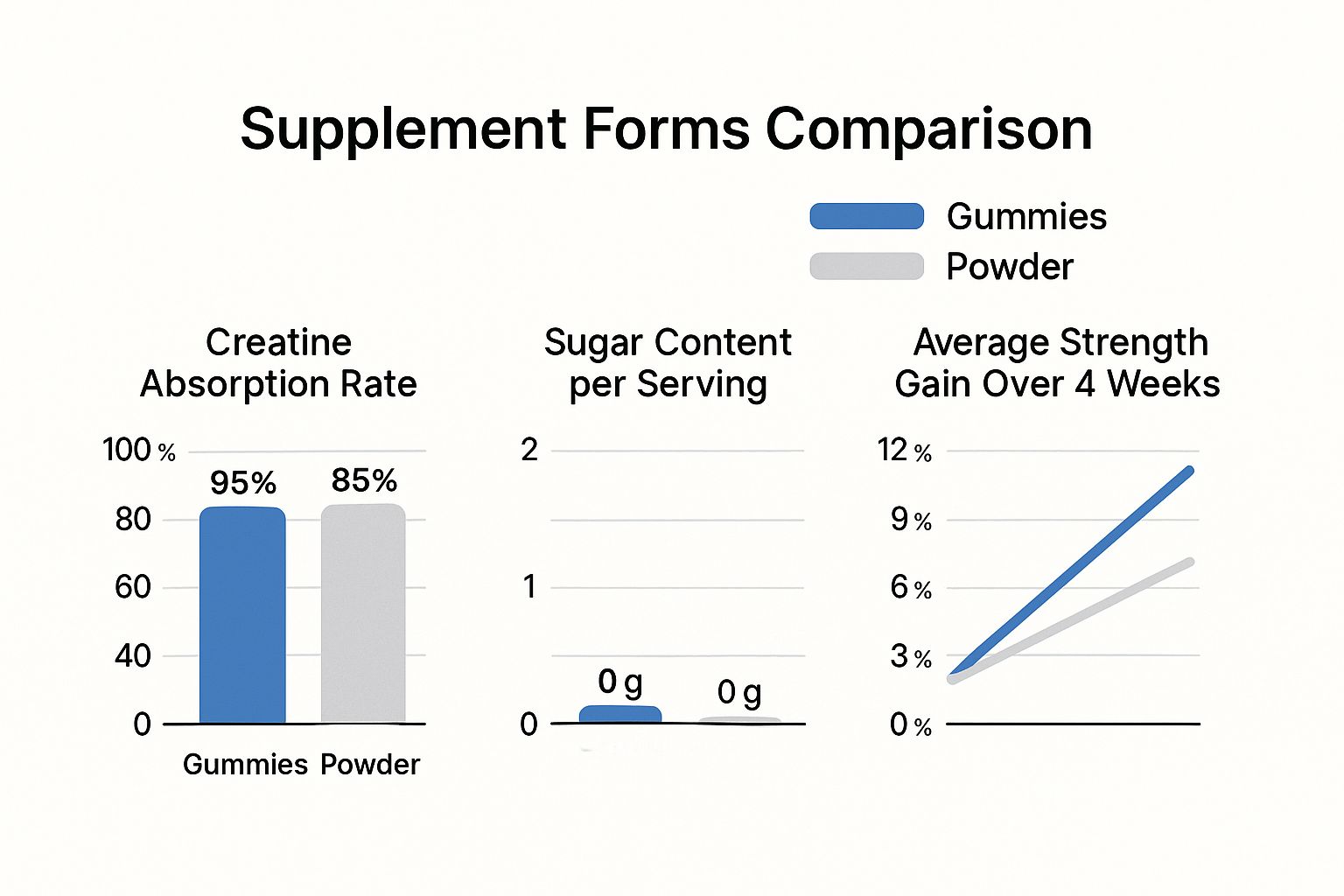
A Closer Look at What Was on the Label
Beyond the impressive creatine dose, Beast Bites also went after the health-conscious crowd by advertising a clean and ethical ingredient list. Their marketing materials often highlighted these key features:
- Vegan-Friendly: No animal products used.
- Non-GMO: Free from genetically modified organisms.
- Cruelty-Free: No animal testing involved.
- Halal-Certified: Meeting specific dietary guidelines.
This combination of a powerful performance ingredient and a clean, ethical profile was a home run. It created a compelling story that made consumers feel like they were getting an elite supplement that aligned with their personal values. The convenience factor was just the icing on the cake.
Imagine a busy professional trying to squeeze in a gym session on their lunch break. The idea of just popping a few gummies instead of mixing a gritty powder was incredibly appealing. They trusted they were getting a full, effective dose to fuel their workout.
It's clear the brand set a very high bar for itself. However, as independent lab tests started rolling in, a troubling picture began to emerge. The claims on the bottle didn't quite match what was actually inside.
Beast Bites Creatine Gummies Claims vs Reality
Here's a breakdown of what Beast Bites advertised versus what independent analysis actually found in the gummies.
| Claimed Benefit | Advertised Dosage | Actual Content Found |
|---|---|---|
| Creatine Monohydrate | 5 grams per 5-gummy serving | As low as 1.96 grams, less than 40% of the claimed amount. |
| Clean & Ethical | Vegan-Friendly, Non-GMO | While not directly disproven, the primary ingredient discrepancy overshadowed these claims. |
| Convenient Dosage | Five gummies for a full dose | Consumers would need to eat 12-13 gummies to get the recommended 5 grams, making it impractical and costly. |
The gap between the marketing promises and the lab-tested reality was significant. For a supplement where dosage is everything, delivering less than half of the advertised amount is a major issue. This discrepancy became the central point of contention for thousands of customers who had put their trust—and their money—into the Beast Bites brand, only to feel misled.
The Lab Test Scandal That Sparked Outrage
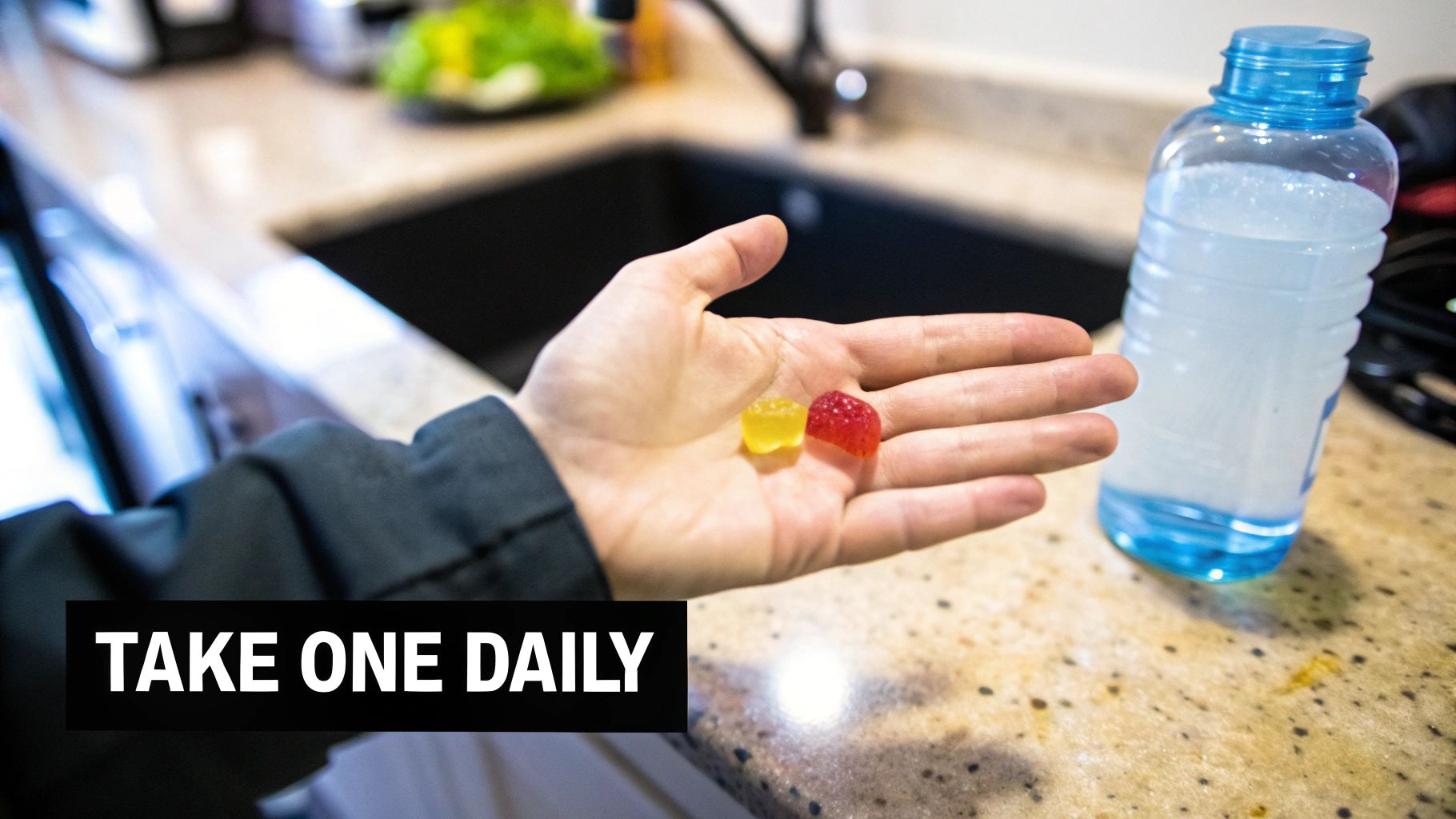
While the marketing for Beast Bites creatine gummies showed a powerful, easy-to-take supplement, a serious controversy was quietly gaining steam. The bold promises on the bottle were about to slam into the harsh reality of independent lab testing, igniting outrage among customers who had put their trust—and their money—into the brand. It was a classic case of what you see isn't what you get, with real consequences for people's training and bank accounts.
The whole thing blew up when third-party lab results, commissioned by credible names in the supplement world, went public. These weren't just some negative online reviews; this was hard science aimed at answering one simple question: do these gummies actually have what the label says they have? The findings were genuinely shocking and sent a shockwave through the fitness community.
What the tests found was a massive gap between the claim and the reality. The core of the controversy was this: while the Beast Bites label proudly advertised 5 grams of creatine per serving, independent analysis found just a minuscule fraction of that. Some tests clocked the actual amount as low as 0.0087 grams per gummy. You can read more about the class action lawsuits that have come out of these findings.
What Does This Mean for Your Fitness Goals?
Let's go back to our "rechargeable battery" analogy for a minute. You thought you were buying a premium, 5-gram power bank to supercharge your muscles for every single workout. Instead, the lab tests showed you got a battery with barely enough juice to make a light flicker. For all intents and purposes, the active ingredient you were paying for just wasn't there.
This means if you were consistently taking Beast Bites to improve your performance, you were essentially just eating candy. You were getting absolutely none of the science-backed benefits of creatine:
- No boost in muscle power during your heavy lifts.
- No extra endurance to push through those last few reps.
- No help with faster recovery between training days.
You could follow the directions perfectly, but the product itself was failing to deliver on its most basic promise. It’s like putting water in your car’s gas tank and wondering why it won’t start. The results simply can't happen if the fuel is missing.
The Problem with Creatinine
The lab reports flagged something else, too: the presence of creatinine. To get why this is such a bad sign, you need a little basic chemistry. Creatine is a pretty unstable molecule, especially when it's sitting in the warm, moist environment required to make a gummy. When creatine breaks down, it turns into creatinine.
Creatinine is the useless byproduct of creatine. It offers zero performance benefits. Think of it as the ash left behind after a fire—it's what’s left when the valuable fuel has been completely used up and made worthless.
Finding high levels of creatinine in a supplement is a massive red flag. It tells you the creatine was either handled poorly during manufacturing or it degraded over time because the gummy formula wasn't stable enough to protect it. Either way, it points to a low-quality product where the key ingredient didn't even survive the trip to your kitchen.
The Backlash and Legal Fallout
Once these lab results hit the internet, the consumer backlash was immediate and fierce. Fitness forums, social media, and review sites lit up with comments from furious customers who felt completely duped. Many had been taking Beast Bites creatine gummies for months, thinking they were investing in their fitness, only to learn they were likely getting no real benefit at all.
This widespread anger didn't take long to turn into legal action. Multiple class-action lawsuits were filed against the makers of Beast Bites and other brands with similar gummy products. The lawsuits claim the companies were guilty of false advertising and deceptive marketing because they knew they were misrepresenting the amount of creatine in their gummies.
The legal argument is straightforward: people paid for a product based on a specific promise of potency, and that promise was a lie. The fallout from this whole mess is a wake-up call for the entire supplement industry. It drives home how critical transparency, proper quality control, and—above all—actually delivering on your promises are for the people who depend on these products.
The Science of Why Creating Stable Creatine Gummies Is Hard
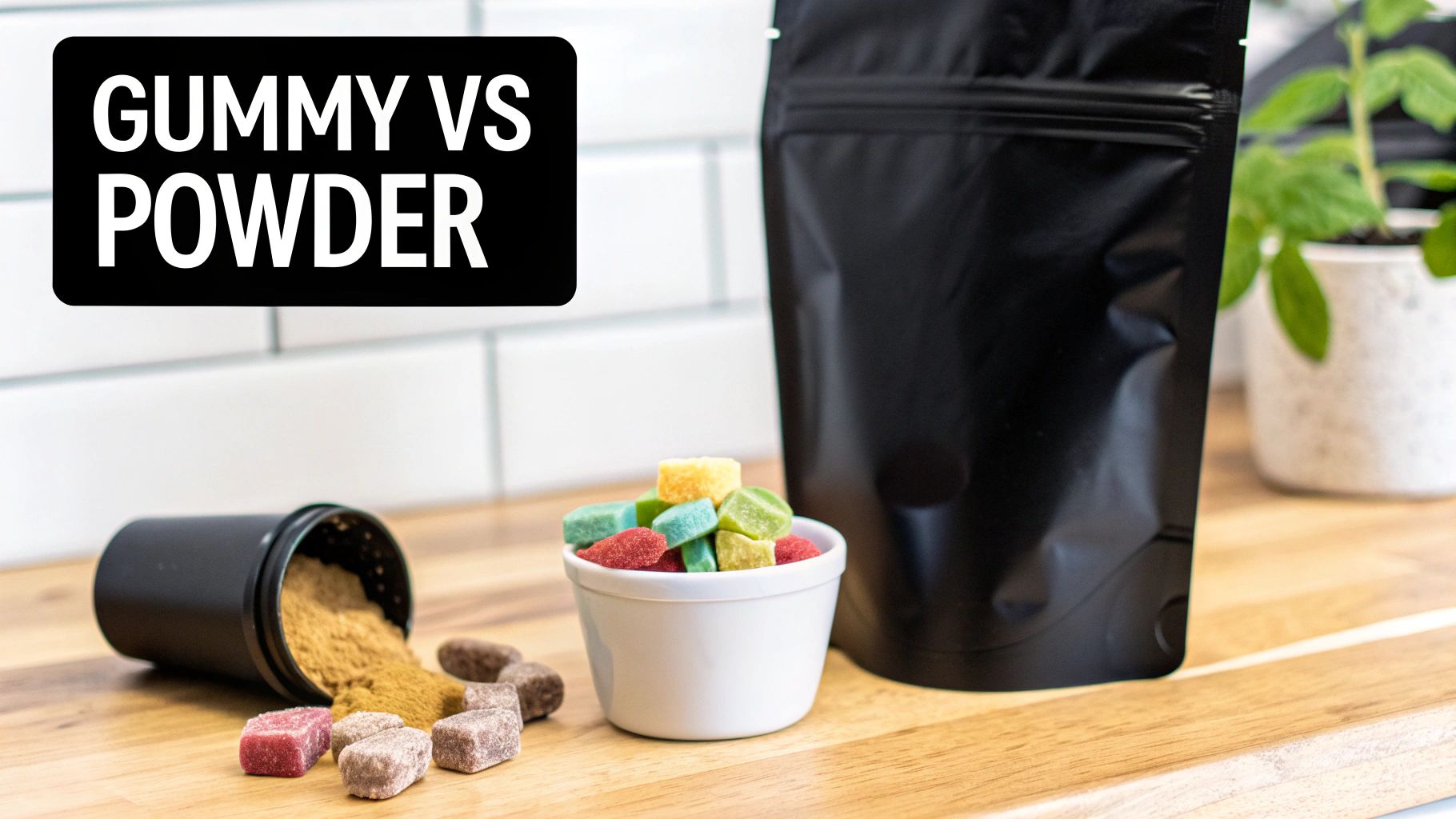
The whole Beast Bites scandal left a lot of people wondering the same thing: how could a company get it so wrong? The truth is, it’s not just a case of cutting corners. It’s a matter of complex food science. Making a creatine gummy that’s both stable and effective is surprisingly difficult, and understanding why really puts into perspective the hurdles that legitimate brands have to clear.
Creatine monohydrate is a notoriously finicky molecule. It’s happiest in a dry, stable environment, which is exactly why powders have been the go-to standard for decades. You just add water, shake, and drink. The second you try to put creatine into a gummy, however, you’re basically creating the perfect storm for it to break down.
The standard gummy-making process involves a trifecta of things that creatine absolutely hates:
- Water: You need high moisture content for that chewy, gummy texture. But water is creatine's number one enemy, kicking off its degradation almost immediately.
- Heat: To dissolve ingredients like gelatin or pectin, you have to apply heat. This heat just speeds up the chemical reaction that destroys creatine.
- Acid: To get that perfect gummy set and a bit of tang, you often need an acidic environment. Unfortunately, acid also makes creatine convert into its useless byproduct much faster.
The Conversion to Creatinine
This breakdown process turns valuable creatine into an inert substance called creatinine. The best way to think about it is like this: creatine is a fully charged battery, ready to fuel your muscles for that next big lift. The harsh gummy manufacturing environment essentially drains that battery flat, leaving you with creatinine—a dead battery that provides zero performance benefits.
Finding a bunch of creatinine in a product like the Beast Bites creatine gummies is a massive red flag. It tells you one of two things: either the creatine was destroyed during the manufacturing process, or the formula was so unstable that it couldn’t protect the active ingredient on the shelf. Either way, the customer ends up with a product that can't possibly live up to its promises.
This chemical instability is precisely why so many companies have struggled to get creatine gummies right. It takes a delicate balancing act, advanced manufacturing techniques, and obsessive temperature control to keep the creatine molecule intact from start to finish.
Creating a potent creatine gummy is a true scientific challenge. It’s not as simple as just mixing powder into a standard gummy recipe. Success demands significant investment in research, development, and stringent quality control to ensure the final product is both stable and effective.
The Brands That Cracked the Code
While the challenge is very real, it’s not impossible. In fact, the failure of brands like Beast Bites looks even worse when you see other companies succeeding where they failed. These successful brands prove that with the right science and a genuine commitment to quality, a stable creatine gummy is entirely possible.
For instance, after all the controversy, a company called Create Creatine sent their gummies for independent potency testing. The results from Eurofins Laboratories were telling: their Blue Raspberry gummies clocked in at 1491 mg of creatine per gummy. That's an impressive 99.4% of their 1500 mg label claim. This is hard proof that when a company invests in the right formulation, they can deliver a stable and potent product. You can read more about these findings in this Nutritional Outlook report.
This contrast really drives the point home. The problem isn't with creatine gummies as a concept, but with the execution. Companies that prioritize quality and use specialized techniques can create a product that actually works, offering the convenience people want without sacrificing the potency they need. To learn more about the science behind effective formulations, you can explore our ultimate guide to creatine monohydrate gummies.
How To Choose a Creatine Supplement You Can Trust
It's easy to feel overwhelmed in the supplement aisle, especially when you hear stories like the Beast Bites creatine gummies controversy. The market is absolutely flooded with products, and flashy labels can often be a smokescreen for low-quality ingredients. But once you know what to look for, you can cut right through the noise and find a creatine supplement that’s both safe and actually works. It's all about learning to spot the green flags of a trustworthy brand.
Think of it like being a detective. Before you even consider buying, you need to do a little investigating, and your first clue is always third-party testing. The supplement industry isn't tightly regulated, so a company’s claims are just words. Independent verification is the only real way to know if what's on the label is what's in the bottle.
The Gold Standard of Trust: Third-Party Certifications
When you see a certification seal on a product, it means an unbiased, independent organization has put that supplement through its paces, testing it for purity and potency. For a supplement like creatine, where the dose is everything, this is non-negotiable.
Keep an eye out for these logos on the packaging:
- NSF Certified for Sport: This is one of the most respected seals in the game. It confirms the product contains what it says it does, has been tested for more than 270 banned substances, and is made in a facility that’s audited every year for quality and safety.
- Informed-Sport: This program takes it a step further by testing every single batch of a product before it ever hits the shelf. It’s a rigorous process built to give athletes total confidence that their supplements are clean.
If a brand hasn't bothered to get this level of testing, you have to ask yourself why. Good companies are proud to prove their quality.
In an industry where trust is everything, third-party testing isn't just a nice-to-have feature—it's the bare minimum. A certification seal is a brand’s promise, backed by an independent authority, that you're getting exactly what you paid for.
How to Read a Supplement Label Like an Expert
Beyond just looking for seals, you need to learn how to decode the supplement facts panel. Don't get distracted by the marketing hype on the front of the bottle; the real story is always on the back.
First, zero in on the type of creatine. Creatine monohydrate is, by far, the most researched and scientifically validated form. While you’ll see other fancy types out there, monohydrate remains the undisputed gold standard for both safety and effectiveness.
Next, check the dosage per serving. The clinically effective dose for creatine is 3-5 grams per day. If a product, whether it's a powder or a gummy, doesn't deliver that in a reasonable serving, it’s not going to give you the results you’re looking for. This was the core issue with the Beast Bites gummies—you’d have to eat a ridiculous number of them to get a proper dose.
Finally, scan the "Other Ingredients" list. This is where companies often sneak in fillers, artificial junk, and other unnecessary additives. A shorter list is almost always a better sign. This is especially important if you're considering gummies. Our complete performance guide on creatine gummies vs powder dives deeper into how these "other ingredients" can influence your decision.
By following this simple checklist—verifying third-party testing, checking the creatine type and dose, and scanning for junk—you can feel confident in your choice. It puts the power back in your hands, helping you sidestep the scams and put your money toward a product that will genuinely support your goals.
Our Final Verdict on Beast Bites Creatine Gummies
So, after peeling back the layers of slick marketing, digging into the science, and examining the fallout from the scandal, what's the bottom line on Beast Bites creatine gummies? When you lay all the cards on the table, the conclusion is unfortunately as clear as it is decisive.
We simply cannot recommend this product.
Based on the damning results from multiple independent lab tests and the ensuing class-action lawsuits, we have to strongly caution everyone to steer clear of this supplement. The brand failed on its most basic promise—delivering a 5-gram dose of creatine—which completely invalidates any other benefit it might claim to offer.
A Cautionary Tale for Consumers
Look, the idea of a tasty, convenient creatine gummy is genuinely great. But in this case, the brand's execution was profoundly deceptive. The independent lab results showed that people were paying a premium for what amounted to little more than a glorified fruit snack. It contained only a tiny fraction of the creatine needed to see any real results.
This wasn't just a small quality control slip-up; it was a fundamental misrepresentation of what was in the bottle.
The whole mess serves as a powerful lesson for anyone trying to navigate the often-confusing world of supplements. It's a stark reminder that you have to look past the flashy ads and influencer hype.
The biggest takeaway from the Beast Bites controversy is that we, as consumers, must demand transparency, insist on third-party testing, and hold companies accountable for the claims they print on their labels.
Your Path Forward to Trustworthy Supplements
The good news? This whole ordeal arms you with the knowledge to make smarter choices from now on. The failure of one company doesn't mean all creatine gummies are bad, nor does it change the fact that creatine itself is a proven, effective supplement. It just hammers home the importance of doing your homework.
Here are the key things to keep in mind to protect yourself:
-
Trust, But Verify: Don’t just take a label’s word for it. Actively search for certification seals from respected third-party testers like NSF Certified for Sport or Informed-Sport. Seeing their logo is your best bet for ensuring quality and potency.
-
Read the Fine Print: Get in the habit of scrutinizing the supplement facts panel. You want to see creatine monohydrate listed, and you need to confirm the serving size provides a clinically effective dose of 3-5 grams.
-
Vote with Your Wallet: Choose to support brands that are open about their manufacturing and proudly share their lab test results. If a company hides behind vague marketing fluff, walk away.
Ultimately, the responsibility rests on our shoulders as consumers to stay vigilant. The story of Beast Bites isn't just about a failed product; it's a call to action. By demanding higher standards, we can force the entire supplement industry to become better, ensuring the products we spend our hard-earned money on are safe, effective, and truly worthy of our trust.
Frequently Asked Questions
It’s totally normal to have questions after hearing about the controversy around Beast Bites creatine gummies. The supplement world can feel like the wild west sometimes, but a little clarity goes a long way in helping you choose what’s right for your fitness goals. Let's tackle some of the most common questions head-on.
Are All Creatine Gummies a Scam?
Absolutely not, and that's the key thing to remember. The scandal with Beast Bites wasn't an indictment of creatine gummies as a concept; it was a massive failure of quality control by a specific company. The problem wasn't the gummy format itself, but rather shady manufacturing practices and formulas that simply didn't hold up.
Think of it this way: if one car company has a major recall, you don’t stop trusting all cars. You just become a more discerning buyer. Many trustworthy brands pour resources into creating stable, effective creatine gummies and prove it with independent testing. The lesson here isn't to swear off gummies, but to get better at spotting the good guys.
What Is the Correct Daily Dose of Creatine?
The research on this is rock-solid. For most people, the sweet spot for creatine monohydrate is a daily dose of 3-5 grams. That’s the amount consistently shown to saturate your muscles over time, giving you that boost in strength, power output, and overall performance.
Forget the old-school "loading phase" of taking huge doses for a week. For the average person, just sticking to a consistent 3-5 grams every single day is the best path to long-term results. Consistency beats intensity here.
How Can I Tell If a Supplement Is Third-Party Tested?
This is probably the most crucial skill you can develop as a supplement consumer. Good companies are proud of their quality and they don't hide it. You should be able to easily find certification logos right on the bottle or on the product's website.
Keep an eye out for these well-respected seals:
- NSF Certified for Sport: This is a gold standard. It confirms the product has what it says it has, is free of over 270 substances banned by major athletic organizations, and was made in a facility that meets strict standards.
- Informed-Sport: This program tests every single batch of a product for banned substances before it ever hits the shelf. It’s a huge commitment to quality.
- BSCG (Banned Substances Control Group): Another highly reputable certifier that provides protection against drugs and other harmful contaminants.
If you can't find one of these logos on a product? That’s a serious red flag. It often means the company either didn't bother to get tested or wasn't confident they would pass.
Ready to feel the power of creatine without choking down messy powders? Smash.com delivers premium creatine gummies that are third-party tested and pack a full 5-gram dose into every tasty serving. Check out a creatine supplement you can actually trust and start fueling your workouts the right way.